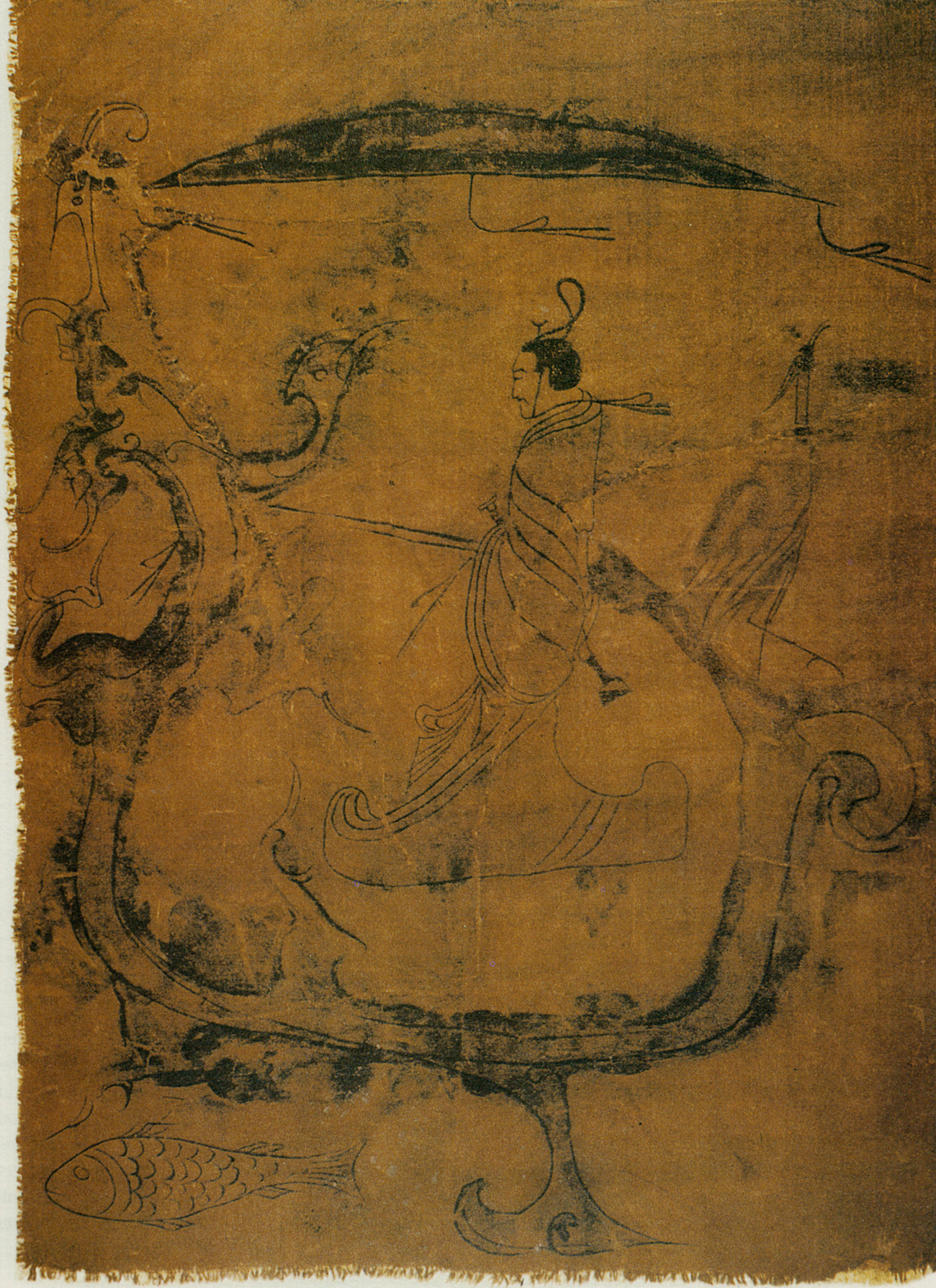Silk painting on:
[Wikipedia]
[Google]
[Amazon]
 Silk painting refers to paintings on silk. They are a traditional way of painting in Asia. Methods vary, but using traditional supplies of 100% silk fabric, stretched in a frame, and applying textile paints or dyes are the beginnings of an amazing creative process in making textile art and the process
Silk painting refers to paintings on silk. They are a traditional way of painting in Asia. Methods vary, but using traditional supplies of 100% silk fabric, stretched in a frame, and applying textile paints or dyes are the beginnings of an amazing creative process in making textile art and the process
 Silk painting (Tranh lụa) was a traditional artisanry in Vietnam. There have been some old silk paintings, e.g. portraits of
Silk painting (Tranh lụa) was a traditional artisanry in Vietnam. There have been some old silk paintings, e.g. portraits of
 Silk painting refers to paintings on silk. They are a traditional way of painting in Asia. Methods vary, but using traditional supplies of 100% silk fabric, stretched in a frame, and applying textile paints or dyes are the beginnings of an amazing creative process in making textile art and the process
Silk painting refers to paintings on silk. They are a traditional way of painting in Asia. Methods vary, but using traditional supplies of 100% silk fabric, stretched in a frame, and applying textile paints or dyes are the beginnings of an amazing creative process in making textile art and the process
National styles
China
One of the earliest surviving Chinese silk paintings is a 2-metre long T-shaped painting, dated from around 165 BCE, from theMawangdui
Mawangdui () is an archaeological site located in Changsha, China. The site consists of two saddle-shaped hills and contained the tombs of three people from the Changsha Kingdom during the western Han dynasty (206 BC – 9 AD): the Chancellor Li ...
. However, painting on silk quickly gave way to painting on other supports.
Silk painting employs gutta
A gutta (Latin pl. guttae, "drops") is a small water-repelling, cone-shaped projection used near the top of the architrave of the Doric order in classical architecture. At the top of the architrave blocks, a row of six ''guttae'' below the narro ...
as a resist, allowing fine patterns to be achieved.
The Tibetan Thangka
A ''thangka'', variously spelled as ''thangka'', ''tangka'', ''thanka'', or ''tanka'' (; Tibetan: ཐང་ཀ་; Nepal Bhasa: पौभा), is a Tibetan Buddhist painting on cotton, silk appliqué, usually depicting a Buddhist deity, scene, ...
is the best known religious painting.
Vietnam
Ancient period
 Silk painting (Tranh lụa) was a traditional artisanry in Vietnam. There have been some old silk paintings, e.g. portraits of
Silk painting (Tranh lụa) was a traditional artisanry in Vietnam. There have been some old silk paintings, e.g. portraits of Nguyễn Trãi
Nguyễn Trãi (阮廌), pen name Ức Trai (抑齋); (1380–1442) was an illustrious Vietnamese Confucian scholar, a noted poet, a skilled politician and a master strategist. He was at times attributed with being capable of almost miraculous o ...
, Phùng Khắc Khoan, Trịnh Đình Kiên, Phan Huy Cẩn, Phan Huy Ích
Phan Huy Ích (chữ Hán: 潘輝益; 1751–1822) was a Vietnamese poet. Phan Huy Ich served two dynasties, both the Le dynasty then the Tay Son uprising. About the time of the collapse of the Tay Son dynasty he wrote the preface to Ngô Thì N ...
, Phan Huy Thực Phan may refer to:
* Phan (surname), a Vietnamese family name
* Phan District, Chiang Rai Province, Thailand
* Phan River, Bình Thuận Province, Vietnam
* Phan (tray)
Phan ( th, พาน, ) is an artistically decorated tray with pedestal. It ...
, and Phan Huy Vịnh dated from Lê Le is a romanization of several rare East Asian surnames and a common Vietnamese surname.
It is a fairly common surname in the United States, ranked 975th during the 1990 census and 368th during the 2000 census. In 2000, it was the eighth-most-co ...
and Nguyễn dynasty
The Nguyễn dynasty (chữ Nôm: 茹阮, vi, Nhà Nguyễn; chữ Hán: 阮朝, vi, Nguyễn triều) was the last Vietnamese dynasty, which ruled the unified Vietnamese state largely independently from 1802 to 1883. During its existence, ...
.
Modern period
Silk paintings of the modern period in Vietnam were taken up by some of the students and French teachers at theEBAI
The Vietnam University of Fine Arts (formerly ''Hanoi College of Fine Arts'') is an art school in Hanoi, Vietnam originally established under French colonial rule in 1925. The university has trained many of Vietnam’s leading artists and each year ...
in Hanoi during the 1930s. The earliest representative of the new interest in silk painting at a 1931 Paris exhibition of silk paintings was Nguyễn Phan Chánh
Nguyen Phan Chanh (July 21, 1892 - November 22, 1984) was born in a rural Vietnamese village, in Ha Tinh (now Nghe Tinh) province. His early education was in Chinese (as was common in pre-colonial times), and he studied Chinese calligraphy so as ...
, a student of EBAI who had originally trained in calligraphy, and who struggled with French oil techniques, and so whom the school director Victor Tardieu
Victor François Tardieu (30 April 1870, Orliénas - 12 June 1937, Hanoi) was a French painter; cofounder of what is now known as the Vietnam University of Fine Arts.
Biography
In 1887, he was admitted to the École nationale des beaux-arts d ...
encouraged to use traditional media.Caroline Turner Tradition and change: contemporary art of Asia and the Pacific - 1993 "Tardieu also encouraged experimentation with such traditional media as lacquer and silk. Although a poor student in anatomy and oil, Nguyen Phan Chanh (1892-1984) excelled in silk. In 1931 , he exhibited his first silk paintings in Paris ."
References
{{reflist Painting techniques Silk